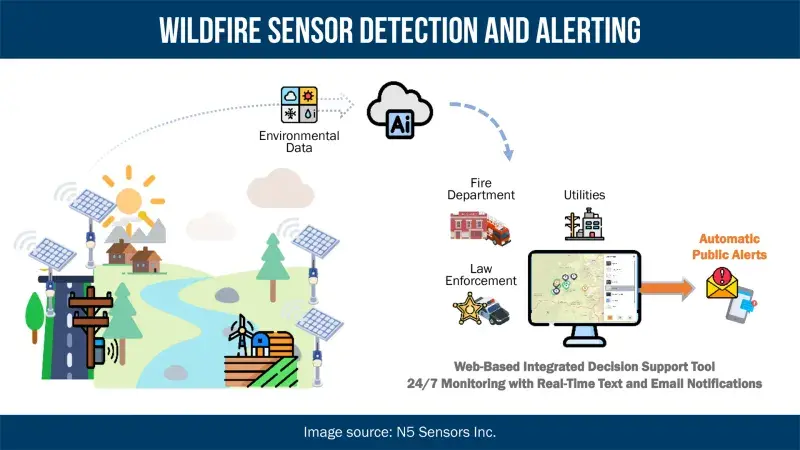Understanding the Impact of Wildfires on Forests
Overview of Wildfire Causes and Consequences
Wildfires are a natural part of many ecosystems, playing a crucial role in nutrient cycling and habitat regeneration. However, they can also lead to devastating consequences. Nearly 90% of wildfires are ignited by human activities, including abandoned campfires, discarded cigarettes, and faulty equipment. These fires not only threaten lives and property but also cause significant ecological and economic damage. For instance, the 2020 wildfire season in California resulted in over 1 million acres burned, leading to extensive losses in biodiversity and habitat.
The Role of Climate Change in Increasing Fire Risks
Climate change exacerbates wildfire risks by creating hotter, drier conditions that facilitate fire spread. According to the EPA, burned acreage has increased dramatically in recent decades, with wildfires rising from 5% to 23% annually between 1984 and 2020. Dry spells and extreme heat waves, intensified by climate change, are making fire seasons longer and more severe. As a result, understanding these dynamics is vital for developing effective strategies to protect our forests.
Effective Fire Prevention Strategies for Forest Management
Methods to Protect Forests from Fire
Creating Firebreaks and Clearing Vegetation
One of the most effective fire prevention strategies is the establishment of firebreaks—areas devoid of vegetation that can halt the spread of wildfires. These firebreaks are created through controlled removal of flammable materials, which can include trees, brush, and other undergrowth. Regular clearing of vegetation not only reduces fuel for fires but also enhances the health of the forest ecosystem.
Implementing Controlled Burns and Prescribed Fires
Controlled burns, or prescribed fires, are intentional fire ignitions under controlled conditions. They serve to reduce the buildup of combustible materials and stimulate new growth. The US Forest Service highlights that these practices can significantly mitigate wildfire risks while promoting biodiversity by creating a mosaic of different habitats.
Best Practices for Forest Fire Management
Regular Maintenance and Monitoring Practices
Routine maintenance of forests is critical for effective fire management. This includes monitoring for signs of diseases and pests that could weaken trees and make them more susceptible to fire. Regular inspections help in identifying areas that require immediate attention, ensuring that the forest remains resilient.
Tree Thinning and Spacing Techniques
Properly spacing trees can drastically reduce the potential for wildfires. When trees are thinned, they are less likely to ignite and spread flames to nearby vegetation. Experts recommend maintaining distances of 4 to 8 feet between deciduous trees and 6 to 10 feet for evergreens. Thinning not only improves forest health but also enhances wildlife habitats by allowing more light to reach the forest floor.
Innovative Technologies for Wildfire Prevention
Satellite and Drone Surveillance Systems
Advancements in technology have revolutionized wildfire monitoring. Satellite and drone surveillance systems provide real-time data on fire behavior and environmental conditions. For instance, drones equipped with thermal imaging can detect heat signatures, allowing for early intervention before a fire escalates.
AI and Sensor Networks for Early Detection
Artificial intelligence plays a pivotal role in wildfire management. AI-driven sensor networks can monitor environmental conditions such as temperature, humidity, and wind patterns to predict fire risks. Systems like Dryad Networks utilize these sensors to alert authorities at the first signs of fire, enhancing response times.
Firefighting Robots and Foam Technologies
Innovative firefighting technologies, including robots and specialized foam, are emerging as vital tools in combating wildfires. Robots can navigate challenging terrains, providing support in inaccessible areas. Meanwhile, advanced foam technologies can effectively coat large areas, suppressing flames more efficiently than water alone.

Community Involvement in Forest Fire Protection
Building Fire-Adapted Communities
Creating fire-adapted communities is essential for reducing wildfire risks. This involves collaboration among residents, local agencies, and fire departments to develop actionable strategies. Communities can create Community Wildfire Protection Plans (CWPP), which outline risks and mitigation measures tailored to local conditions.
Educating Residents on Fire Safety and Prevention
Education is a cornerstone of effective fire management. Informed residents are more likely to take proactive measures, such as maintaining defensible spaces around their properties. Programs that teach fire safety and prevention techniques can significantly reduce the likelihood of human-caused wildfires.
Collaboration with Local Fire Departments and Agencies
Engagement with local fire departments enhances community resilience to wildfires. Firefighters often serve as trusted sources of information, helping to disseminate vital fire prevention messages. Collaborative efforts can lead to improved emergency response strategies and better resource management during fire events.
Conclusion: A Holistic Approach to Forest Fire Management
Integrating Community Efforts and Technology in Fire Protection
A comprehensive approach to forest fire management integrates community involvement, innovative technologies, and sustainable practices. By fostering collaboration and leveraging cutting-edge tools, we can enhance forest resilience and minimize wildfire impacts.
Future Directions in Fire Management Strategies
Looking forward, the integration of advanced technologies with traditional fire management practices will be crucial. Continued research and community engagement will pave the way for more resilient ecosystems and safer communities as we face the challenges posed by wildfires.
Key Takeaways:
- Preventing wildfires requires a mixed approach of community engagement, technology, and sustainable practices.
- Creating firebreaks and implementing prescribed fires are effective strategies to manage forest health and prevent wildfires.
- Innovative technologies, including AI and drone surveillance, are essential for early detection and response to wildfires.
- Educating communities on fire safety significantly reduces human-caused fires and enhances resilience.
- Collaboration with local fire departments strengthens community preparedness and response strategies against wildfires.
